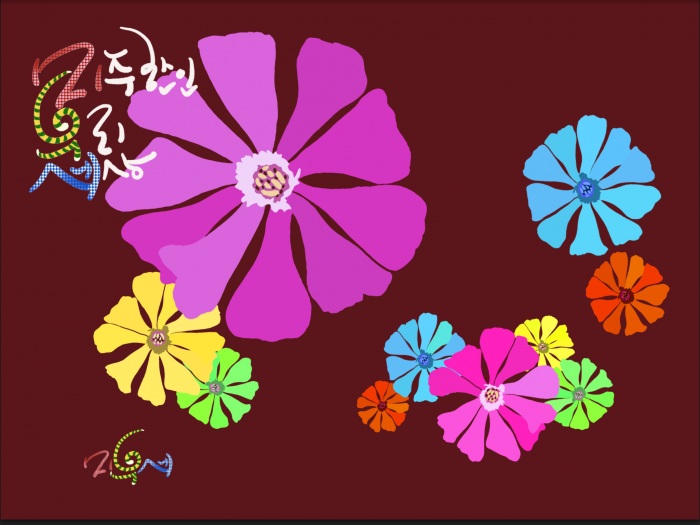'코란'을 읽어봤는가, 내게 물었다
b슨상이 어젠가 내게 묻기를 '코란'을 읽어 보았는가? 내 답변이 '오래 전에 읽었지만 지금은 아니 읽었다. 그래서 오늘 2월 3일 '17 오후 2시 40분 경에 아래에 적힌 글을 그의 네번째 책인 "The Age of Faith"의 175-176페지를 읽기 끝냈다.
그 내용을 영문으로 타이프를 칠까 망서리다가 google해보면 해당부분이 실려있을 수도 있다는 생각이 미쳤다. 그래서 http://www.sullivan-county.com/x/koran_form.htm 을 발견하고 아래에 전재한다.
번역해주는 수고를 하더라도 관심있는 분들이 그리 많지 않은 것을 내 아는 바라, biblitell슨상이나 읽어보시길 원한다. 하지만 다른 분들도 알고 지나가는 것이 옳치 않을까... (참고: 이 영문이 책에 써있는 그대로구먼)
혹시 더 탐구할 요량이면,
Section 11 Creed- 3 pages
Section 111 Ethics-2 1/4 pages
Section 1V Religion and The State-2 pages
Section V The Sourses of the Korean-2 1/4 pages
다음 Chapter는 "The Sword of Islam"로써 모두 20 pages
禪涅槃
--------------------------
The word koran (qur'an) means a reading or discourse, and is applied by Moslems to the whole, or to any section, of their sacred scriptures. Like the Jewish-Christian Bible, the Koran is an accumulation, and orthodoxy claims it to be in every syllable inspired by God. Unlike the Bible, it is proximately the work of one man, and is therefore without question the most influential book ever produced by a single hand.
At various times in the last twenty-three years of his life Mohammed dictated some fragment of this revelation; each was written upon parchment, leather, palm-leaves, or bones, was read to an assembly, and was deposited in various receptacles with preceding revelations, with no special care to keep them in logical or chronological order. No collection of these fragments was made in the Prophet's lifetime; but several Moslems knew them all by heart, and served as living texts.
In the year 633, when many of these men had died and were not being replaced, the Caliph Abu Bekr ordered Mohammed's chief amanuensis, Zaid ibn Thabit, to "search out the Koran and bring it together." He gathered the fragments, says tradition, "from date leaves and tablets of white stone, and the breasts of men." From Zaid's completed manuscript several copies were made; but as these had no vowels, public readers interpreted some words variously, and diverse texts appeared in different cities of the spreading Moslem realm.
To stop this confusion the Caliph Othman commissioned Zaid and three Quraish scholars to revise Zaid's manuscript (651); copies of this official revision were sent to Damascus, Kufa, and Basra; and since then the text has been preserved with unparalleled purity and reverential care. The nature of the book doomed it to repetition and disorder.
Each passage taken separately fulfills an intelligible purpose, states a doctrine, dictates a prayer, announces a law, denounces an enemy, directs a procedure, tells a story, calls to arms, proclaims a victory, formulates a treaty, appeals for funds, regulates ritual, morals, industry, trade, or finance. But we are not sure that Mohammed wanted all these fragments gathered into one book. Many of them were arguments to the man or the moment; they can hardly be understood without the commentary of history and tradition; and none but the Faithful need expect to enjoy them all.
The 14 chapters ("suras") are arranged not in the order of their composition, which is unknown, but in the order of their decreasing length. Since the earlier revelations were generally shorter than the later ones, the Koran is history in reverse. The Medina suras, prosaic and practical. appear first; the Mecca suras, poetic and spiritual, appear last. The Koran puts its worst foot forward, and should be begun at the end.
All the suras, except the first take the form of discourses by Allah or Gabriel to Mohammed, his followers, or his enemies; this was the plan adopted by the Hebrew prophets, and in many passages of the Pentateuch. Mohammed felt that no moral code would win obedience adequate to the order and vigor of a society unless men believed the code to have come from God.
The method lent itself well to a style of impassioned grandeur and eloquence, at times rivaling Isaiah.1 Mohammed used a mode of utterance half poetry, half prose; rhythm and rhyme are pervasive in it, but irregular; and in the early Meccan suras there is a sonorous cadence and bold sweep of style that are completely felt only by those familiar with the language and sympathetic with the creed. The book is in the purest Arabic, rich in vivid similes, and too florid for Occidental taste. By general consent it is the best, as well as the first, work in the prose literature of Arabia. - http://www.sullivan-county.com/x/koran_form.htm
그 내용을 영문으로 타이프를 칠까 망서리다가 google해보면 해당부분이 실려있을 수도 있다는 생각이 미쳤다. 그래서 http://www.sullivan-county.com/x/koran_form.htm 을 발견하고 아래에 전재한다.
번역해주는 수고를 하더라도 관심있는 분들이 그리 많지 않은 것을 내 아는 바라, biblitell슨상이나 읽어보시길 원한다. 하지만 다른 분들도 알고 지나가는 것이 옳치 않을까... (참고: 이 영문이 책에 써있는 그대로구먼)
혹시 더 탐구할 요량이면,
Section 11 Creed- 3 pages
Section 111 Ethics-2 1/4 pages
Section 1V Religion and The State-2 pages
Section V The Sourses of the Korean-2 1/4 pages
다음 Chapter는 "The Sword of Islam"로써 모두 20 pages
禪涅槃
--------------------------
The word koran (qur'an) means a reading or discourse, and is applied by Moslems to the whole, or to any section, of their sacred scriptures. Like the Jewish-Christian Bible, the Koran is an accumulation, and orthodoxy claims it to be in every syllable inspired by God. Unlike the Bible, it is proximately the work of one man, and is therefore without question the most influential book ever produced by a single hand.
At various times in the last twenty-three years of his life Mohammed dictated some fragment of this revelation; each was written upon parchment, leather, palm-leaves, or bones, was read to an assembly, and was deposited in various receptacles with preceding revelations, with no special care to keep them in logical or chronological order. No collection of these fragments was made in the Prophet's lifetime; but several Moslems knew them all by heart, and served as living texts.
In the year 633, when many of these men had died and were not being replaced, the Caliph Abu Bekr ordered Mohammed's chief amanuensis, Zaid ibn Thabit, to "search out the Koran and bring it together." He gathered the fragments, says tradition, "from date leaves and tablets of white stone, and the breasts of men." From Zaid's completed manuscript several copies were made; but as these had no vowels, public readers interpreted some words variously, and diverse texts appeared in different cities of the spreading Moslem realm.
To stop this confusion the Caliph Othman commissioned Zaid and three Quraish scholars to revise Zaid's manuscript (651); copies of this official revision were sent to Damascus, Kufa, and Basra; and since then the text has been preserved with unparalleled purity and reverential care. The nature of the book doomed it to repetition and disorder.
Each passage taken separately fulfills an intelligible purpose, states a doctrine, dictates a prayer, announces a law, denounces an enemy, directs a procedure, tells a story, calls to arms, proclaims a victory, formulates a treaty, appeals for funds, regulates ritual, morals, industry, trade, or finance. But we are not sure that Mohammed wanted all these fragments gathered into one book. Many of them were arguments to the man or the moment; they can hardly be understood without the commentary of history and tradition; and none but the Faithful need expect to enjoy them all.
The 14 chapters ("suras") are arranged not in the order of their composition, which is unknown, but in the order of their decreasing length. Since the earlier revelations were generally shorter than the later ones, the Koran is history in reverse. The Medina suras, prosaic and practical. appear first; the Mecca suras, poetic and spiritual, appear last. The Koran puts its worst foot forward, and should be begun at the end.
All the suras, except the first take the form of discourses by Allah or Gabriel to Mohammed, his followers, or his enemies; this was the plan adopted by the Hebrew prophets, and in many passages of the Pentateuch. Mohammed felt that no moral code would win obedience adequate to the order and vigor of a society unless men believed the code to have come from God.
The method lent itself well to a style of impassioned grandeur and eloquence, at times rivaling Isaiah.1 Mohammed used a mode of utterance half poetry, half prose; rhythm and rhyme are pervasive in it, but irregular; and in the early Meccan suras there is a sonorous cadence and bold sweep of style that are completely felt only by those familiar with the language and sympathetic with the creed. The book is in the purest Arabic, rich in vivid similes, and too florid for Occidental taste. By general consent it is the best, as well as the first, work in the prose literature of Arabia. - http://www.sullivan-county.com/x/koran_form.htm

좋아요 0
태그
DISCLAIMER
이곳에 게시된 글들은 에이전트 혹은 사용자가 자유롭게 올린 게시물입니다. 커뮤니티 내용을 확인하고 참여에 따른 법적, 경제적, 기타 문제의 책임은 본인에게 있습니다.
케이타운 1번가는 해당 컨텐츠에 대해 어떠한 의견이나 대표성을 가지지 않으며, 커뮤니티 서비스에 게재된 정보에 의해 입은 손해나 피해에 대하여 어떠한 책임도 지지 않습니다.




 Ktown스토리
Ktown스토리 케이톡
케이톡


![[무료나눔] 의외로 국제학교 학생들에게 가장 부족한 부분 1위 '이것' [무료나눔] 의외로 국제학교 학생들에게 가장 부족한 부분 1위 '이것'](https://www.ktown1st.com/uploads/images/froalaeditor/2025/11/12/03720770173784e479517392fbb8f3aa.png)












